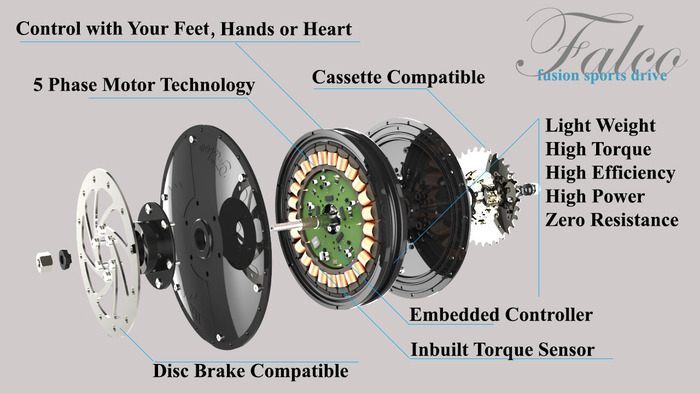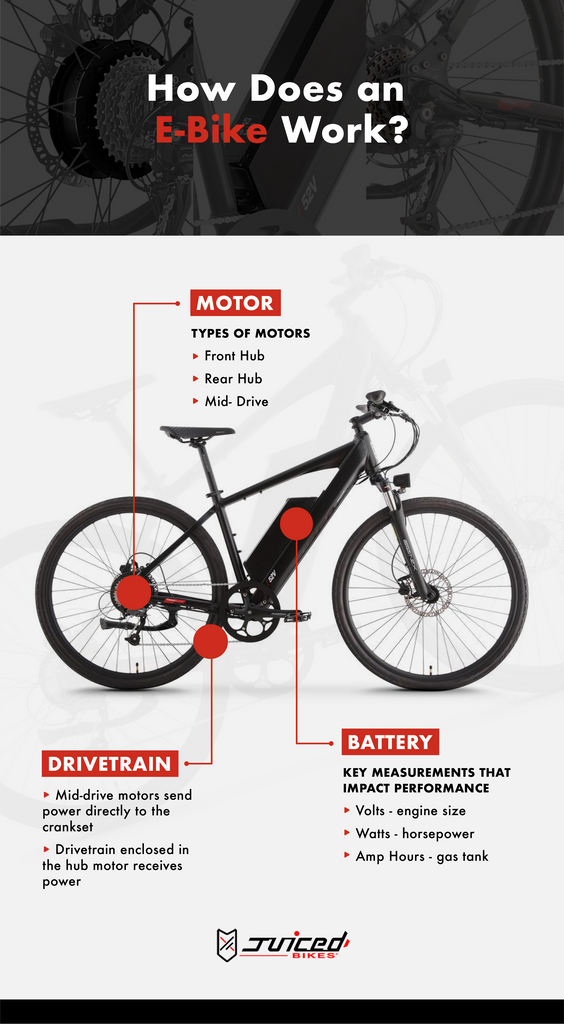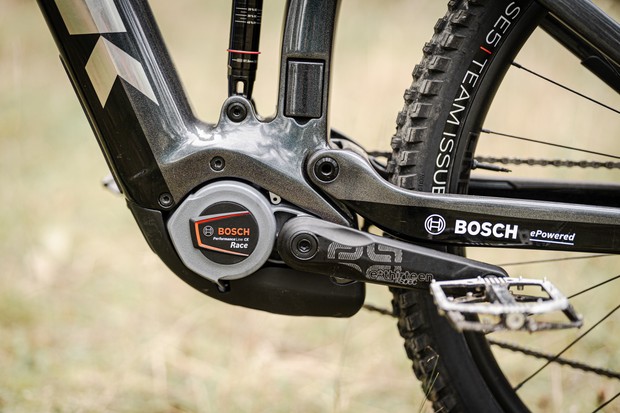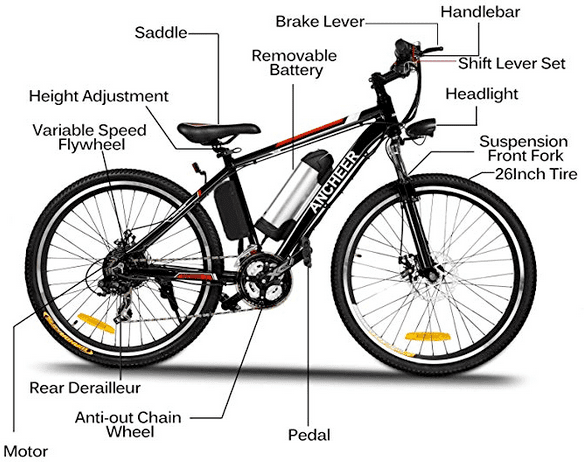If you’re curious about the inner workings of electric bikes and the key component that makes them go, then look no further than this article on electric bike motors. This comprehensive overview will delve into the role of electric bike motors, highlighting their importance in determining e-bike performance. From explaining how these motors function to exploring the different types available, this article will equip you with the knowledge you need to understand the heart of electric bikes. Whether you’re interested in learning about electric bike motor efficiency, hub motors, or mid-drive motors, this article has got you covered. So, let’s embark on this journey together and uncover the fascinating world of electric bike motors.
Role of Electric Bike Motors
Electric bike motors play a crucial role in the overall performance and functionality of electric bikes. They are responsible for providing the necessary power for propulsion and enhancing the pedal assistance. Additionally, electric bike motors enable higher speeds and longer range, making them an integral component of modern electric bikes. In this article, we will delve into the importance of electric bike motors, their basic principles of operation, the different types of motors available, and other key aspects related to their efficiency, performance comparison, maintenance, and future developments.
1. Importance of Electric Bike Motors
Electric bike motors are of paramount importance in the world of electric biking. They are the heart and soul of electric bikes, providing the necessary power to propel the bike forward. Without a functional motor, an electric bike would essentially become a conventional bicycle, losing its ability to provide assistance and making it difficult to ride. Electric bike motors are the key component that distinguishes e-bikes from traditional bicycles, offering a unique riding experience and opening up a new realm of possibilities.
1.2 Factors Affecting Performance
Various factors contribute to the overall performance of an electric bike motor. The efficiency and power output of the motor, along with the torque it generates, play a critical role in determining the performance of the electric bike. Additionally, the motor’s weight and speed capabilities directly impact the riding experience. The design and integration of the motor within the electric bike also affect its performance. It is essential to understand these factors to choose the right electric bike motor for your specific needs and riding style.

2. How Electric Motors Function
To comprehend the functionality of electric bike motors, it is important to grasp the basic principles of electric motor operation. Electric motors operate based on the principles of electromagnetic induction. They convert electrical energy into mechanical energy, resulting in the rotational motion of the motor. This rotational motion, in turn, drives the wheels of the electric bike, providing the necessary propulsion.
2.2 Components of an Electric Bike Motor
Electric bike motors consist of several key components that work together to convert electrical energy into mechanical energy. These components include the stator, rotor, magnets, and electric coils. The stator is the stationary part of the motor that houses the electric coils, while the rotor is the rotating part with the magnets. When an electric current passes through the coils, it creates a magnetic field that interacts with the magnets on the rotor, generating rotational motion.

3. The Importance of Electric Bike Motors
3.1 Powering Electric Bikes
The most evident significance of electric bike motors is their ability to power electric bikes. Without a motor, electric bikes would rely solely on the rider’s physical effort, drastically limiting their range and practicality, especially on hilly terrains and longer commutes. Electric bike motors provide the necessary propulsion to effortlessly navigate through various terrains, making them a preferred mode of transport for commuting and recreational purposes.
3.2 Enhancing Pedal Assistance
One of the key advantages of electric bike motors is their ability to enhance pedal assistance. Electric bikes equipped with pedal-assist systems detect the rider’s pedaling efforts and provide an additional boost of power when needed. This feature allows riders to tackle challenging terrains and longer distances with ease, making their journey more enjoyable and less strenuous. Electric bike motors amplify the rider’s efforts, resulting in a smooth and effortless riding experience.
3.3 Enabling Higher Speeds and Range
Electric bike motors also enable higher speeds and longer range compared to traditional bicycles. By providing additional power, electric bike motors allow riders to reach higher speeds without exerting excessive effort. This is particularly beneficial for commuting purposes, as it reduces travel time and increases overall efficiency. Furthermore, electric bike motors contribute to a longer range by reducing the strain on the rider, enabling them to cover greater distances on a single charge.
4. Types of Electric Bike Motors
4.1 Hub Motors
Hub motors are one of the most common types of electric bike motors. They are typically integrated into the center of the front or rear wheel hub and provide direct power to the wheel. Hub motors offer simplicity in design and are relatively easy to maintain. They are available in both geared and direct drive configurations, each offering its own set of advantages and considerations.
4.2 Mid-Drive Motors
Mid-drive motors, also known as central or crank motors, are positioned near the bottom bracket of the frame, where the pedals and crankset are located. These motors transfer power directly to the drivetrain, allowing for a more natural riding experience. Mid-drive motors offer greater torque, improved handling, and enhanced weight distribution, making them ideal for off-road and mountain biking adventures.
4.3 All-in-One Motors
All-in-one motors combine the qualities of both hub and mid-drive motors. These motors are typically positioned at the bottom bracket and drive the rear wheel using a chain or belt. All-in-one motors offer a balanced weight distribution, efficient power transmission, and a seamless riding experience. They are often preferred for urban commuting and recreational cycling.
4.4 Direct Drive Motors
Direct drive motors, as the name suggests, directly drive the wheel without the need for gears. These motors are known for their quiet operation, smooth acceleration, and low maintenance requirements. However, they tend to be heavier compared to geared motors and may result in reduced efficiency when climbing steep hills or in stop-and-go traffic.
4.5 Geared Motors
Geared motors utilize a transmission system to increase the torque output of the motor while maintaining a smaller size and weight. These motors are generally more efficient at climbing steep hills and provide better acceleration compared to direct drive motors. Geared motors are often favored for urban commuting and hilly terrains.

5. Understanding Motor Efficiency
5.1 Efficiency and Battery Life
Motor efficiency is a critical factor to consider when choosing an electric bike motor. Higher motor efficiency translates to less energy waste, resulting in a longer battery life and increased range. Efficient motors ensure that a greater percentage of the energy from the battery is converted into mechanical power, minimizing energy loss and maximizing the performance of the electric bike.
5.2 Factors Affecting Motor Efficiency
Several factors can affect the efficiency of an electric bike motor. The design and quality of the motor, as well as the overall system integration, play a significant role. The choice between geared and direct drive motors can also impact efficiency, with geared motors often providing superior efficiency at lower speeds and during acceleration. Additionally, factors such as wind resistance, tire pressure, and riding style can influence motor efficiency.
6. Performance Comparison of Motor Types
6.1 Power Output
The power output of an electric bike motor directly affects the performance and capabilities of the electric bike. Different motor types offer varying power outputs, with mid-drive motors typically providing higher power due to their direct power transfer to the drivetrain. Hub motors, on the other hand, may have lower power outputs but offer simplicity and ease of maintenance.
6.2 Torque
Torque is a measure of the rotational force generated by the motor. Higher torque allows for better acceleration, especially when climbing hills or carrying heavier loads. Mid-drive motors are known for their superior torque output, making them suitable for off-road and mountain biking adventures. However, hub motors with geared configurations can also offer significant torque, depending on the motor design and gear ratio.
6.3 Speed
The maximum speed achievable by an electric bike is determined by the motor’s power output, the bike’s weight and aerodynamics, and any speed limits imposed by local regulations. Mid-drive motors generally offer better speed capabilities, as the power is directly transferred to the drivetrain. Hub motors can also achieve high speeds, although their top speed may be limited in some cases.
6.4 Weight
The weight of the motor contributes to the overall weight of the electric bike, which can impact maneuverability and efficiency. Direct drive hub motors tend to be heavier due to the absence of gears, while geared hub motors and mid-drive motors are generally lighter. The weight distribution and balance of the electric bike also play a role in determining its overall handling and stability.

7. Market Trends in Electric Bike Motors
7.1 Advancements in Motor Technology
The electric bike industry is witnessing constant advancements in motor technology. Manufacturers are continually improving motor efficiency, power output, and overall performance. There is a growing emphasis on reducing the size, weight, and noise of electric bike motors while increasing their durability and reliability. Advancements in motor technology have led to more efficient and powerful electric bike motors, further enhancing the riding experience.
7.2 Integration with Smart Features
Electric bike motors are being increasingly integrated with smart features, such as connectivity to mobile applications, GPS tracking, and customizable riding modes. These smart features enhance the overall user experience by providing real-time ride data, remote control capabilities, and personalized settings. The integration of smart features with electric bike motors is aimed at making electric biking more convenient, interactive, and tailored to individual preferences.
7.3 Shift towards Mid-Drive Motors
In recent years, there has been a noticeable shift towards the use of mid-drive motors in electric bikes. Mid-drive motors offer several advantages, including better weight distribution, improved handling, and increased torque. They are particularly favored by off-road and mountain biking enthusiasts who require a more dynamic and responsive riding experience. The shift towards mid-drive motors reflects the industry’s focus on performance and versatility.
8. Choosing the Right Electric Bike Motor
8.1 Matching Motor Type to Riding Style
When choosing an electric bike motor, it is essential to consider your riding style and intended use. If you primarily ride on flat terrains and seek simplicity, a hub motor may be suitable. For off-road adventures and demanding terrains, a mid-drive motor would be a better choice. All-in-one motors offer a balanced experience that works well for urban commuting and recreational cycling. Matching the motor type to your riding style ensures optimal performance and enjoyment.
8.2 Considerations for Different Terrains
Different terrains present varying challenges and requirements for electric bike motors. If you frequently encounter steep hills, a mid-drive motor with high torque capabilities would be advantageous. For predominantly flat terrains, a hub motor with a higher top speed may be more suitable. It is crucial to consider the specific terrain conditions and riding environment to select a motor that can handle the demands of your intended routes.

9. Maintenance and Troubleshooting Tips
9.1 Regular Cleaning and Lubrication
Proper maintenance of the electric bike motor is essential for ensuring its longevity and optimal performance. Regular cleaning, especially after riding in dusty or muddy conditions, helps prevent the accumulation of dirt and debris that can impede motor performance. Additionally, lubricating the moving parts of the motor, such as the bearings, helps reduce friction and maintain smooth operation.
9.2 Diagnosing Common Motor Issues
Occasionally, electric bike motors may experience issues that require troubleshooting. Common motor issues can include reduced power output, unusual noises, or erratic behavior. Diagnosing these issues may involve inspecting electrical connections, checking for loose components, and examining the motor for any visible damage. Following the manufacturer’s guidelines and seeking professional assistance, if needed, can help resolve motor issues efficiently.
9.3 Seeking Professional Assistance
If you encounter motor issues beyond your understanding or capability, it is advisable to seek professional assistance. Electric bike dealerships or specialized repair shops have the expertise and knowledge to diagnose and repair motor-related problems effectively. Attempting to fix complex motor issues without the necessary skills or tools may further damage the motor or other components of the electric bike.
10. Future Developments in Electric Bike Motors
10.1 Improvements in Efficiency and Power Output
The future of electric bike motors holds exciting possibilities for improved efficiency and power output. Ongoing research and development focused on motor technology aim to maximize energy conversion and minimize energy loss, leading to more efficient motors. Advancements in motor design, materials, and manufacturing processes are also expected to contribute to higher power outputs, allowing for faster speeds and greater torque.
10.2 Integration of Artificial Intelligence
As the world embraces artificial intelligence (AI) technologies, the electric bike industry is also exploring the integration of AI into electric bike motors. AI-powered motors can adapt to user preferences, terrain conditions, and external factors to optimize performance. They can analyze data in real-time and adjust power delivery accordingly, providing an intuitive and personalized riding experience.
10.3 Lightweight and Compact Designs
Future developments in electric bike motors are likely to focus on reducing weight and size while maintaining or improving performance. Lighter and more compact motor designs will contribute to enhanced maneuverability, efficiency, and overall ride quality. Advancements in motor materials, miniaturization techniques, and battery technologies can pave the way for lighter and more portable electric bike motors.
In conclusion, electric bike motors are crucial components that enable the functionality, performance, and overall experience of electric bikes. Their role in powering electric bikes, enhancing pedal assistance, enabling higher speeds and range, and the various types of motors available highlight their importance. Understanding motor efficiency, performance comparison of different motor types, market trends, and considerations for choosing the right motor further aid in making informed decisions. Regular maintenance, troubleshooting, and future developments in electric bike motors ensure a seamless and evolving electric biking experience.




